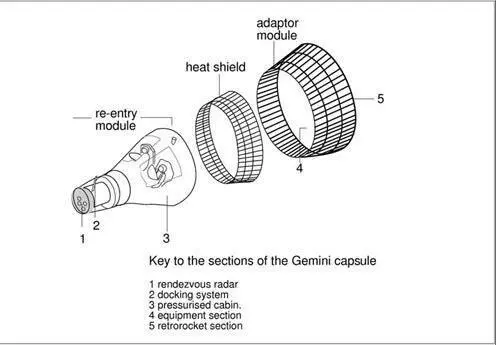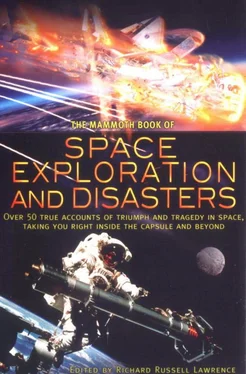Project Gemini and the bush telegraph
Hamish Lindsay was an Australian who worked for NASA Carnarvon, one of the NASA tracking stations in Australia. Chris Kraft, NASA’s first flight director, described him as “one who lived through the Camelot period of space in the 60s and knows the trauma we all endured”.
The tracking station at Carnarvon was built for the Gemini missions. Carnarvon was an outback town with a population of 2,200, 965 kilometres north of Fremantle on the west coast of Australia.
The first Gemini trial was on 8 April 1964 and was an unmanned test of the structural integrity of the new spacecraft and its launch vehicle, the Titan II. Lindsay:
Carnarvon’s first mission was a real Australian Outback story of the bush telegraph. It was Wednesday 8 April 1964 and the first unmanned Gemini trial, GT-I, was sitting on the launch pad ready to open the Gemini Program with a test of the structural integrity of the spacecraft and the launch vehicle. At Carnarvon the staff were still putting the finishing touches to the new station.
The author remembers that it was 10:22 pm local time – 1 minute 37 seconds to lift off. “We were standing by listening to the count, anxious to prove ourselves with our first mission. Everything was ready – we had all our mission information loaded, the equipment tuned up. Suddenly the line to Mission Control at Cape Canaveral went dead – at the time we didn’t know what had happened, but we were cut off from the outside world by a lightning strike 105 kilometres south of the station.”
Mrs Lillian O’Donoghue, the postmistress and operator of the weather station at Hamlin Pool at the southern end of Shark Bay, was roused up that night by a telephone call from the operator at Northampton, asking if she could contact Carnarvon. Using the bush telegraph – nothing more than a party line of telephones connected to the top strand of the local property fences, or in some places a line strung between the fence posts – Mrs O’Donoghue, who hadonlybeeninthe jobfor four months,was able to speak to the operator 241 kilometres away in the town of Carnarvon.
The mission tracking data from Cape Canaveral was intercepted at Adelaide, and phoned through to the Postmaster General’s Department test room in Perth. The Perth technicians then relayed the information to the technician at Mullewa, who established a phone patch through Northampton to Mrs O’Donoghue, and she and her husband then passed blocks of figures in half hour segments on to the Carnarvon operator from 10:30 pm until 3:45 am. From the Carnarvon telephone exchange it was a simple matter to get the information to the tracking station and the FPQ6 radar, a key element in the early phases of NASA launches from Cape Canaveral. It was 3 am before the PMG linesmen battled through driving rain and several washouts to get the normal landline operational again. After this episode a special tropospheric radio link was built between the station and Perth, and there were no more major communication breakdowns.

As Carnarvon had all the mission data already loaded before the lightning struck, the most important information was the time the spacecraft was launched and any changes. As Carnarvon wasn’t officially completed and not a critical station for this particular mission, the launch went ahead, leaving Pad 19 on 8 April 1964. Sent into orbit faster than expected, the spacecraft ended up 34 kilometres higher than planned. One of the only two powerful FPQ6 radar’s tracking at the time, Carnarvon followed the spacecraft over Australia until the mission was terminated after 64 orbits on 12 April, and came down in the South Atlantic.
In 1959 “Buzz” Aldrin was a US Air Force jet fighter pilot stationed in Germany. Both he and his friend Ed White wanted to be selected for the astronaut program. Aldrin realized that he needed higher education so decided to apply for an astronautics program at the Massachusetts Institute of Technology (MIT). Aldrin described NASA’s program:
George Low joined NASA as Chief of the Office of Space Flight programs. He suggested the next goal after orbit should be a circumlunar flight which would lead to a landing on the moon. A landing on the moon would be NASA’s long term goal.
NASA realized a circumlunar flight would require a spacecraft that could provide life support for more than one astronaut and be capable of reaching a velocity of 25,000 miles per hour in order to escape from Earth’s gravitational field. It would also have to shield the crew from radiation while traveling to the moon and be able to withstand reentry to Earth’s atmosphere at this speed, which was much greater than the 17,500-mile-per-hour orbital reentry. The big spacecraft would be far heavier than the booster capacity of any planned military missile.
Von Braun’s Huntsville team already had a class of large boosters on the drawing board. Called the Saturn (after Jupiter’s neighboring planet in the solar system), the first generation of large boosters incorporated a cluster of Jupiter-type engines as the first stage, to produce 1.5 million pounds of thrust. Von Braun also envisioned a second-generation superbooster he called the Nova, whose first stage would cluster the big F-1 engines that were then being studied by the Defense Department. Each F-1 produced a thrust of 1.5 million pounds.
In December 1959, Abe Silverstein and his advanced development group went even further than von Braun’s ambitious initial plans for the Saturn class of rockets. Following conventional design philosophy, the first stage of the new boosters would use proven kerosene and LOX propellants. Silverstein, however, knew that the upper stages of any eventual moon booster would require a much higher thrustto-weight capability than LOX-kerosene technology could provide. His group recommended fueling the upper stages with supercold (cryogenic) liquid hydrogen and LOX, a high-energy combination whose use was fraught with technical problems. This was the technology that the rocket pioneers Tsiolkovsky, Oberth, and Goddard said offered the most efficient and lightweight conversion of fuel to thrust. Von Braun knew this, of course, but was hesitant to embrace this unconventional propellant technology. His years of trying unsuccessfully to interest America in spaceflight had taught him to be cautious in his recommendations. Now that senior NASA officials were backing this method of fueling the booseters, he was more than happy to follow.
Silverstein’s insistence on the high-energy cryogenic upper stages for NASA’s eventual Saturn rockets would become the key that would unlock the door to the first moon landing. After the fall of 1959, Wernher von Braun began participating to an even greater extent in both NASA’s Project Mercury and ambitious advanced spaceflight plans. Eisenhower, recognizing that if America was going to compete with the Soviets it would need large civilian boosters, finally gave in to Glennan’s repeated requests and transferred von Braun’s Development Operations Division of the Army Ballistic Missile Agency to NASA, effective July 1, 1960. On that date, Wernher von Braun became director of NASA’s new Marshall Space Flight Center (named for Ike’s wartime colleague General George C. Marshall) in Huntsville, Alabama. Eisenhower even attended the dedication ceremonies on September 1, 1960. NASA had finally acquired the Army-funded Jet Propulsion Laboratory (JPL), the nation’s preeminent satellite laboratory, the year before.
Von Braun’s Huntsville center had an in-house industrial capacity unlike anything seen before. His policy, from Peenemunde days, was to have his team actually build their own prototypes, rather than farming out the work to industry. So Marshall was actually a booster factory, not simply an R&D laboratory. JPL had the same type of operation for the construction of prototype satellites and spacecraft systems. NASA now had the ability to begin practical work on a manned lunar landing program. All they lacked was White House approval.
Читать дальше













